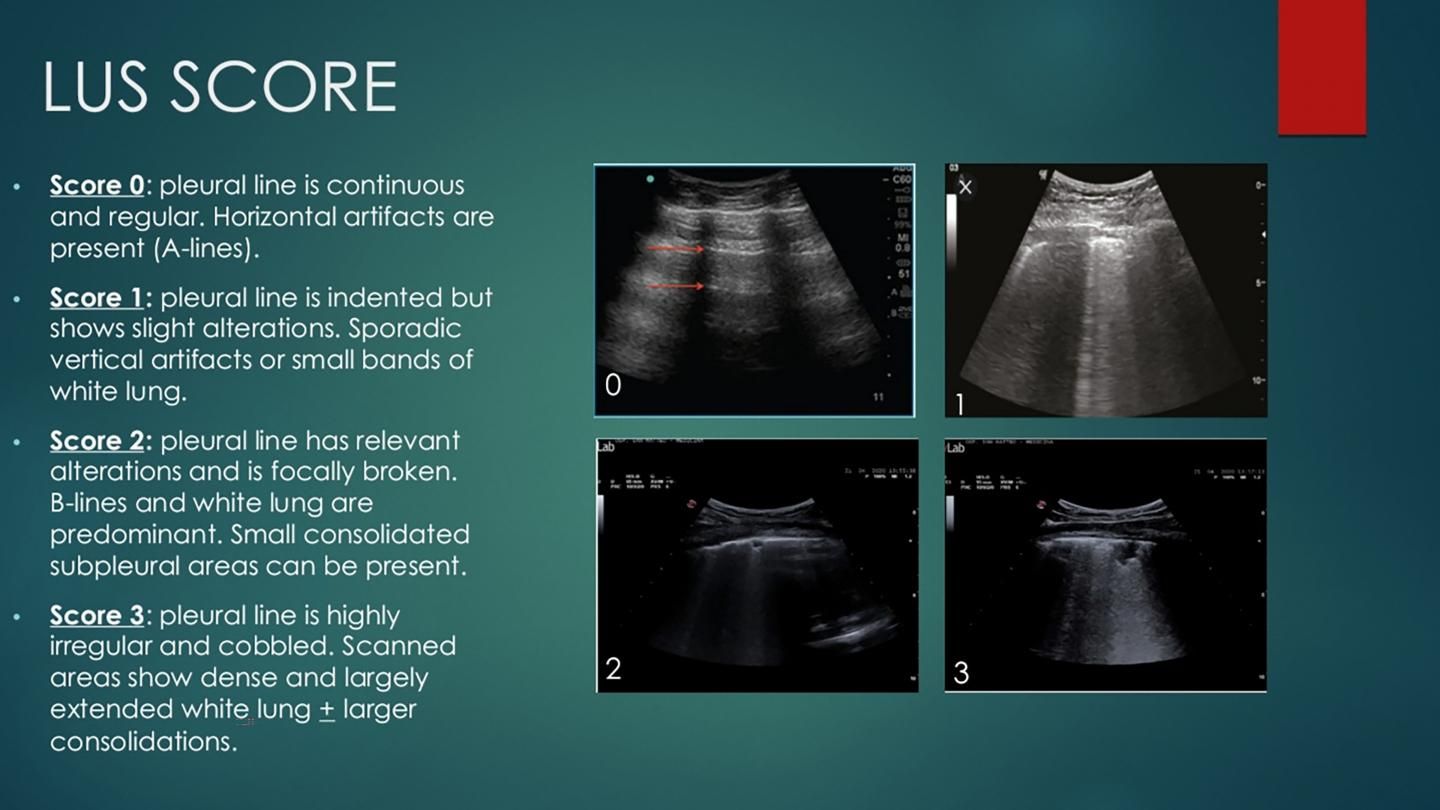Use Lung Ultrasound to Predict COVID-19 Outcome
Providers can use scans to score a patient’s lung health, potentially identifying which patients will fare worse from the virus, requiring more extensive treatment.
Lung ultrasound scans could play a vital role in helping providers identify and predict which patients, who are hospitalized for the virus, will worsen and require more treatment. This development could be critical nationwide as cases of COVID-19 are surging.
It is already known that lung ultrasounds can help identify patients who have COVID-19 pneumonia, but according to researchers from Policlinico San Matteo in Pavia, the scans can also help physicians rapidly assess and determine the probability of whether a patient will continue to deteriorate.
It all comes down to a lung score assigned from a 3-point scale.
The team, led by Umberto Sabatini, M.D., an internal medicine resident, presented their method, which uses ultrasound images to score a patient’s lung health, during the 179th Meeting of the Acoustical Society of America. By assigning a simple score to these scans, they said, providers can make much more informed decisions about patients and the care they will need.
Using 14 points in the lungs, researchers looked for abnormalities and assigned each spot a score out of 3 based on its severity. Adding up all the points, they found the total lung ultrasound score was higher for those who had a worsening outcome of COVID-19. Credit: Umberto Sabatini

To develop the tool, the team performed lung ultrasounds – both upon arrival and before discharge – on 52 patients who were admitted to San Matteo Hospital between March 15, 2020, and April 29, 2020. They examined 14 points in the lungs for abnormalities, such as pleural irregularities, and gave each spot a score on a 3-point scale to assign a level of severity.
Related Content: Lung Ultrasound Reveals COVID-19 Duration and Disease Severity
Overall, the entire exam lasted only 15 minutes-to-20 minutes as a scan of each spot took roughly 10 seconds.
For each exam, the team added up all the points, and based on those calculations, they discovered that patients who had higher lung ultrasound scores ended up having worse COVID-19 outcomes. These individuals were more likely to require supplemental oxygen, to be admitted to the intensive care unit, or to die. Specifically, patients who had at least three spots with a score of “3” or those with high overall scores were more than six times more likely to have a more negative outcome.
Using these results, Sabatini’s team suggested a nomogram that could help clinicians more accurately predict the likelihood that a patient will continue to decline and need more extensive care.
For more coverage based on industry expert insights and research, subscribe to the Diagnostic Imaging e-newsletter here.
The Reading Room: Racial and Ethnic Minorities, Cancer Screenings, and COVID-19
November 3rd 2020In this podcast episode, Dr. Shalom Kalnicki, from Montefiore and Albert Einstein College of Medicine, discusses the disparities minority patients face with cancer screenings and what can be done to increase access during the pandemic.
What New Research Reveals About Novice Use of AI-Guided Cardiac Ultrasound
April 4th 2025In a study recently presented at the American College of Cardiology (ACC) conference, researchers found that novice use of AI-guided cardiac ultrasound after an AI-enabled electrocardiogram increased the positive predictive value for reduced left ventricular ejection fraction (LVEF) or aortic valve stenosis by 33 percent.
New AI-Enabled Portable Ultrasound May Facilitate 50 Percent Reduction in Cardiac Imaging Scan Time
March 28th 2025Artificial intelligence (AI)-powered measurement capabilities provide key features with the Compact Ultrasound 5500CV device, which was unveiled at the American College of Cardiology (ACC) conference.